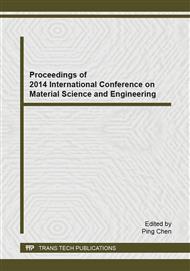p.422
p.426
p.432
p.437
p.445
p.453
p.458
p.464
p.469
Experiment on the Attenuation Characteristics of Shock Wave Interacting with Open and Closed Foam
Abstract:
For understanding the dynamic behavior of open and closed foam subject to a shock wave, this paper through experiments, to gain a deeper understanding of the incidence, reflection and transmission of a shock wave when it interacted with cellular foam. Moreover, by analyzing the loss of the peak overpressure and positive impulse, we were able to respectively know the positive impulse of the incidence, reflection and transmission shock wave. The experimental results indicated that the attenuation capability for foam to the shock wave was caused by the internal friction and deformation of solid phase, which would absorb the energy of the shock wave. From the results we gain an understanding that the mechanical phenomenon of open foam to shock wave are not fully consistent with those of closed foam , while the attenuation of open foam to shock wave is more effective than that of closed foam.
Info:
Periodical:
Pages:
445-452
Citation:
Online since:
October 2014
Authors:
Keywords:
Price:
Сopyright:
© 2014 Trans Tech Publications Ltd. All Rights Reserved
Share:
Citation:


